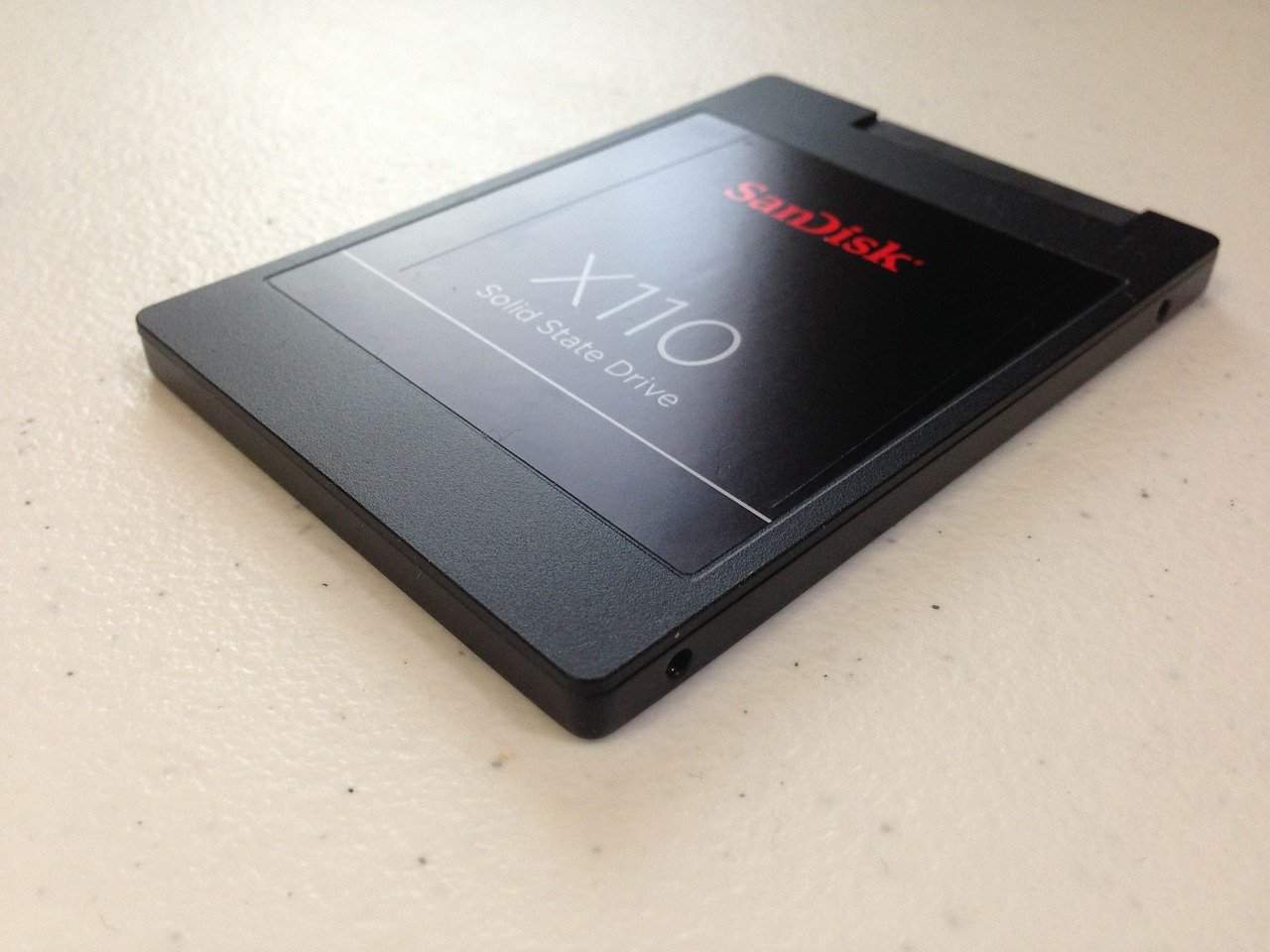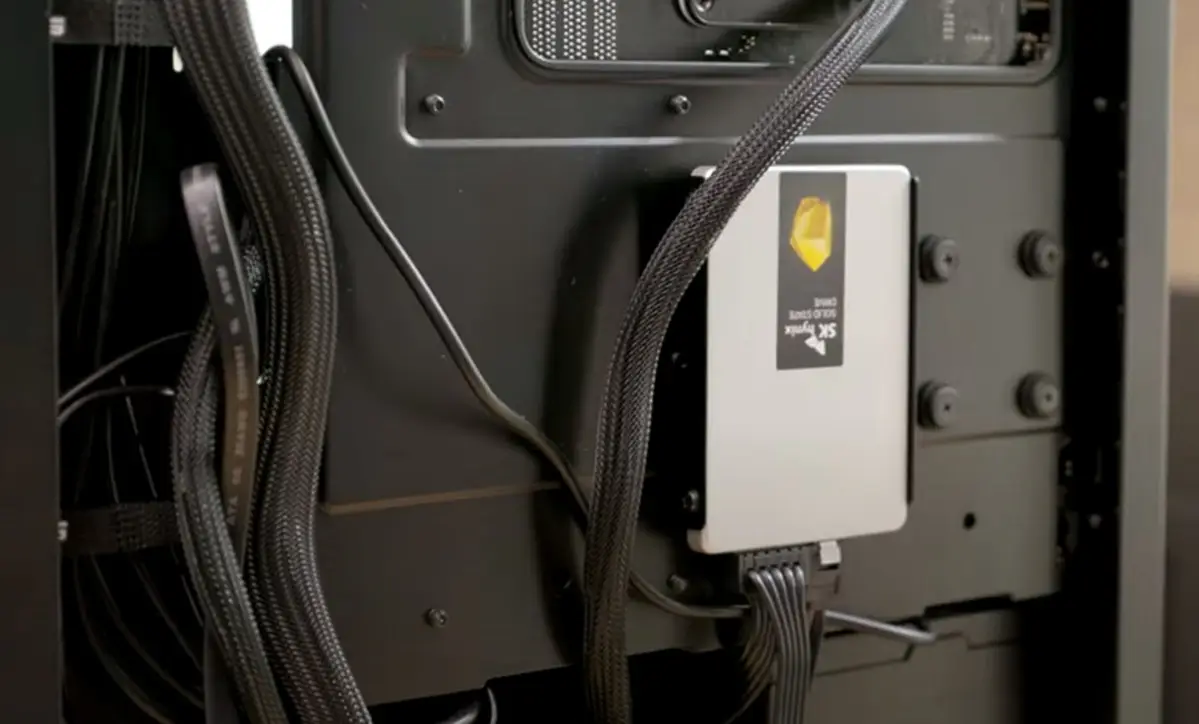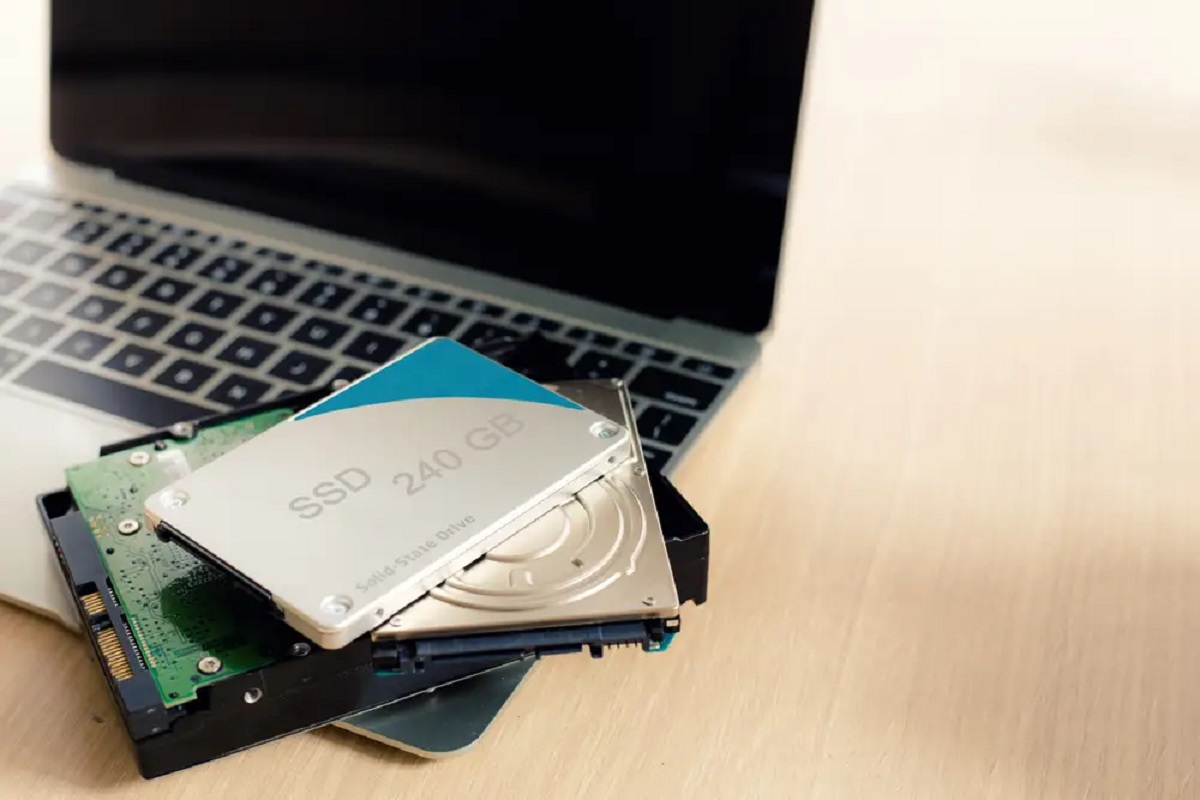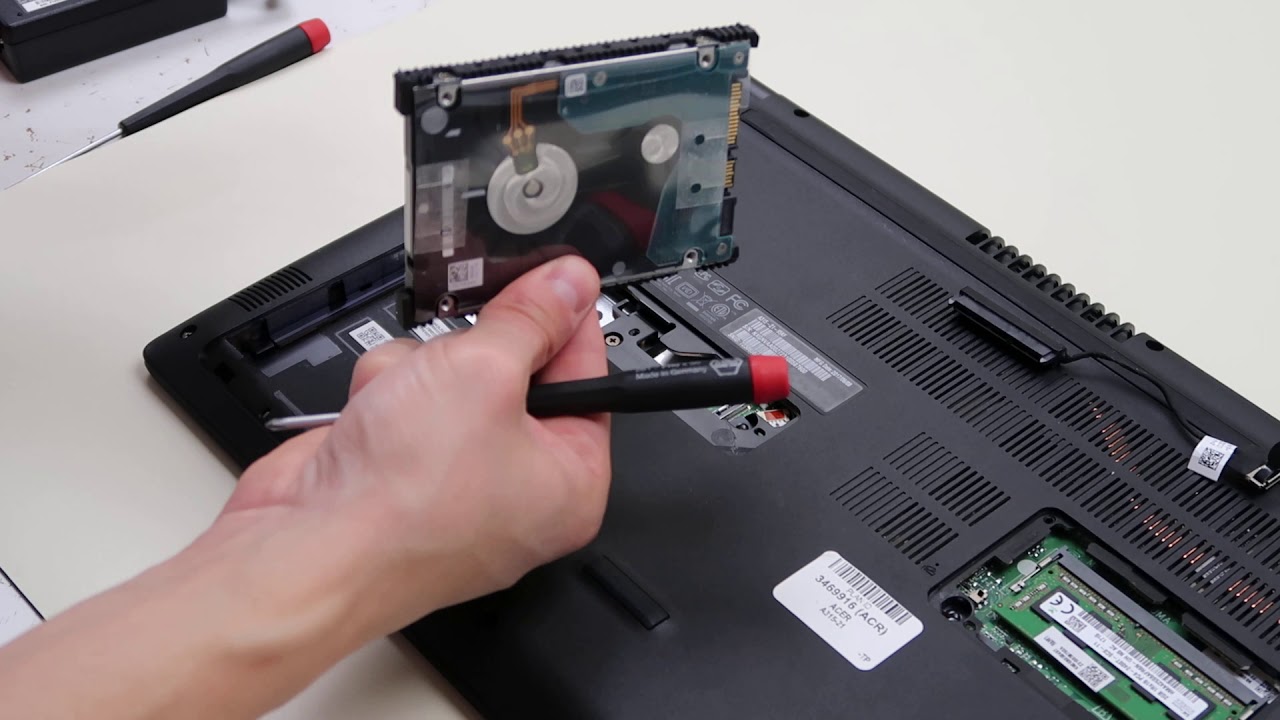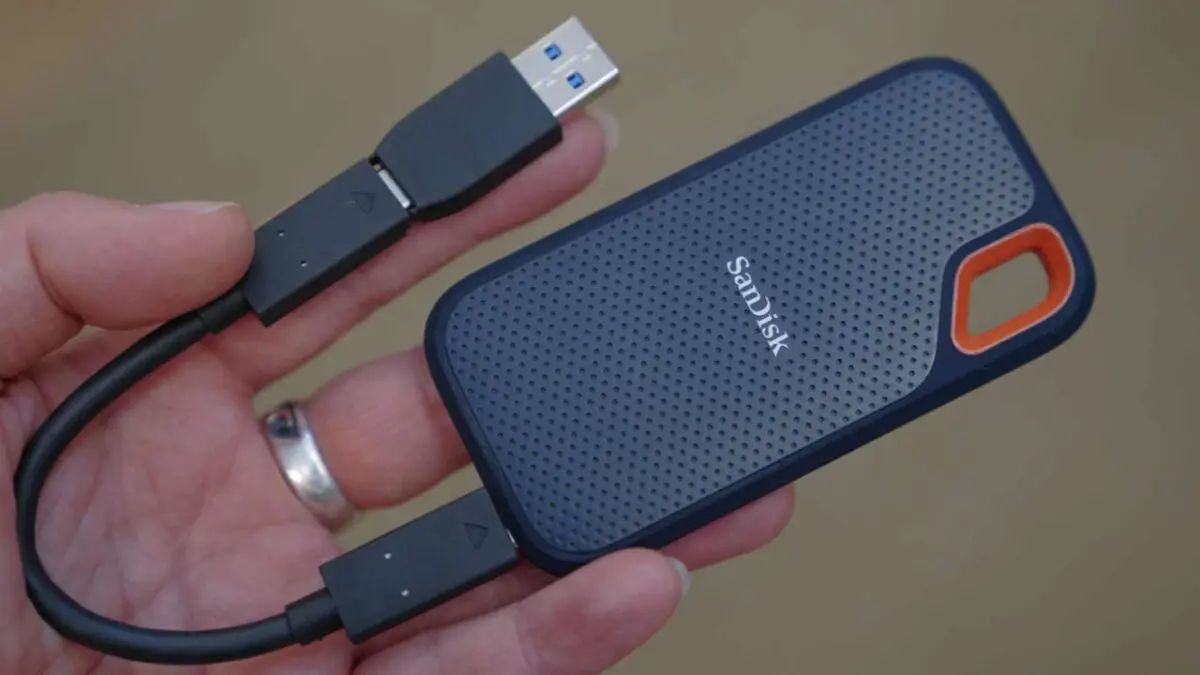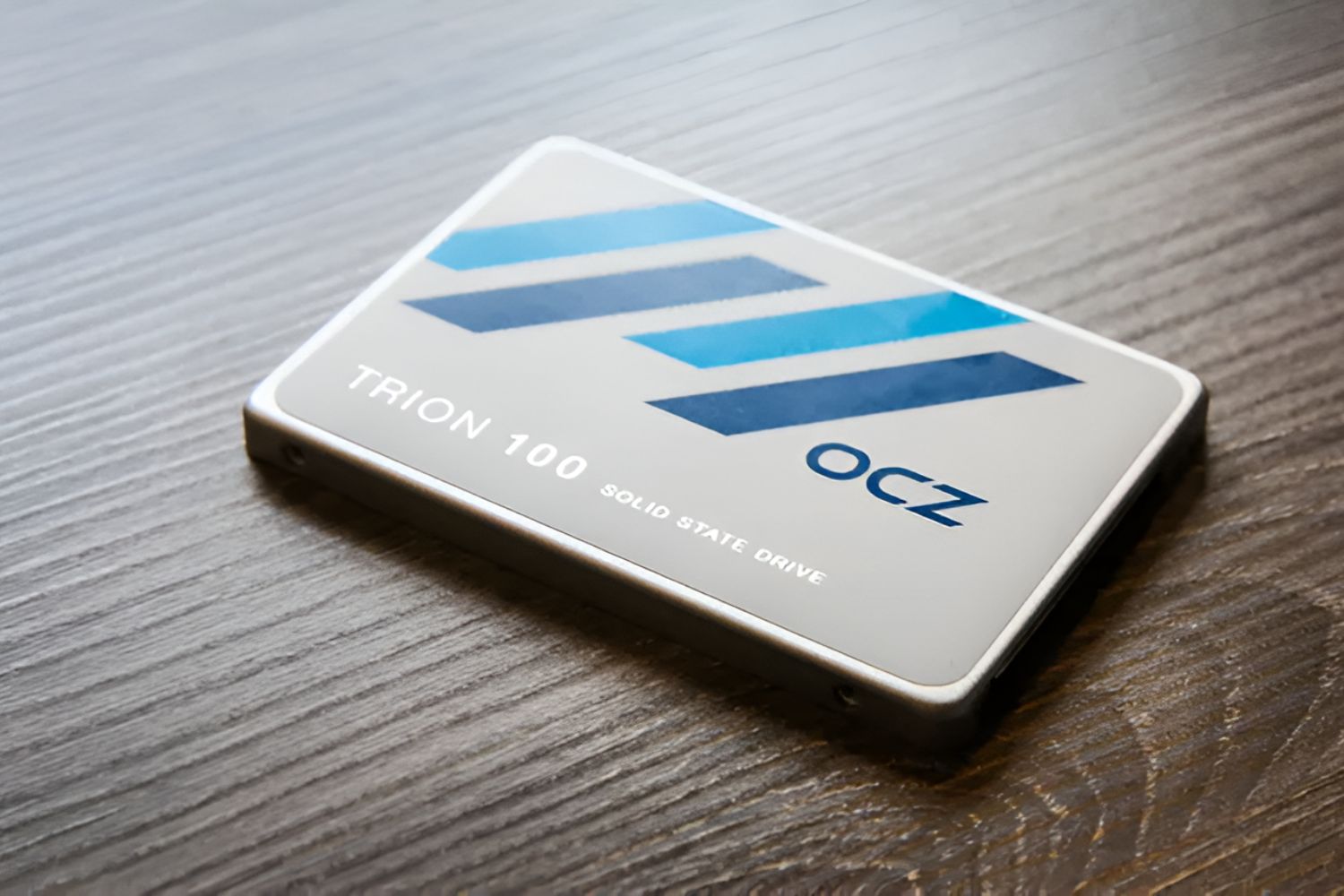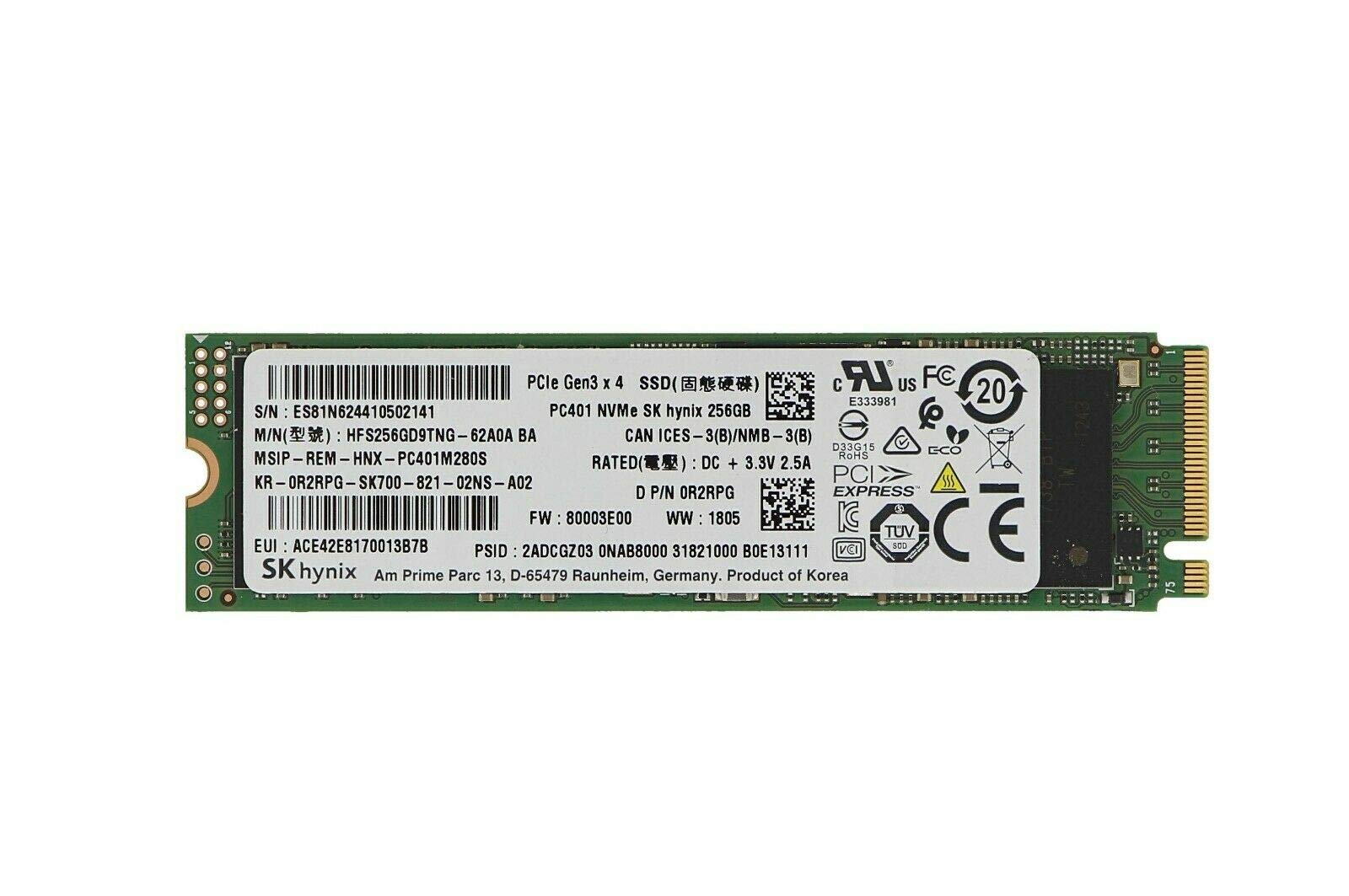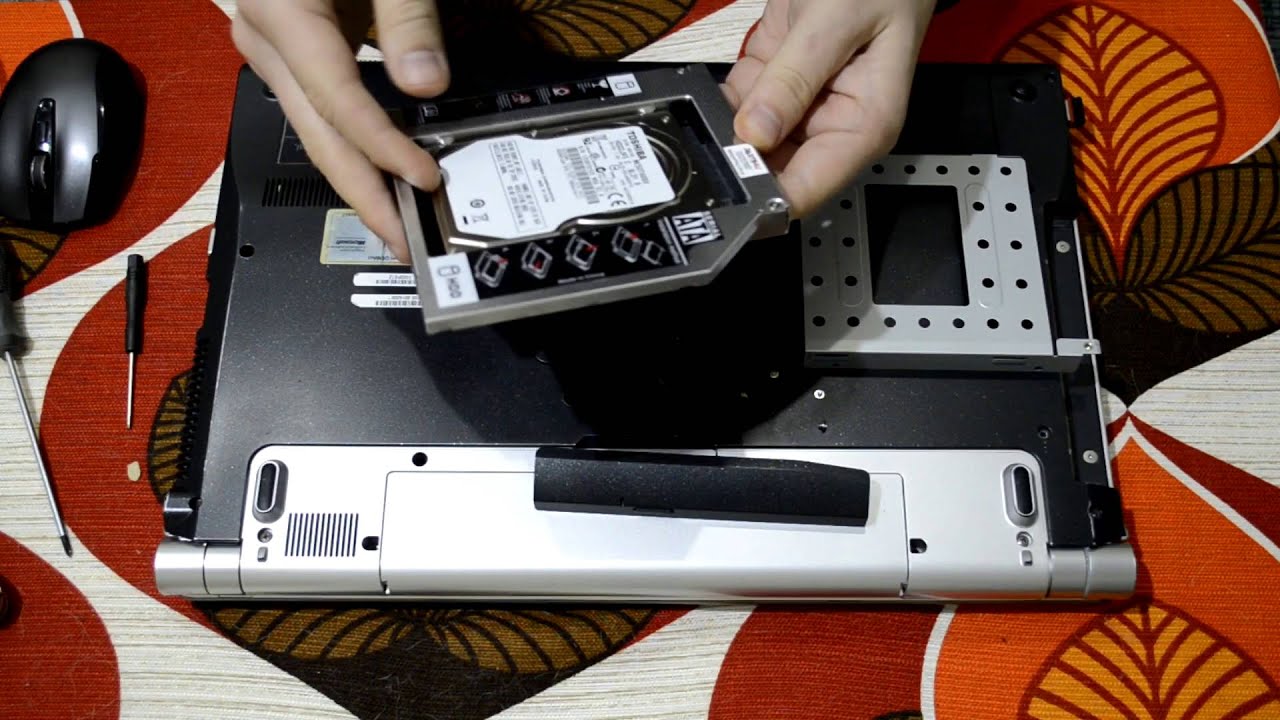Introduction
Welcome to the world of Solid State Drives (SSDs), the future of storage technology. Over the past few years, SSDs have revolutionized the way we store and access our data. With lightning-fast speeds and improved reliability, SSDs have become the preferred choice for many users, ranging from casual computer enthusiasts to hardcore gamers and professionals.
So, what exactly is a Solid State Drive? Unlike traditional hard disk drives (HDDs), which use spinning magnetic platters to store data, SSDs rely on flash memory technology. This means that instead of mechanical components, SSDs use integrated circuits to store and retrieve data quickly and efficiently.
In this article, we will delve deeper into the world of SSDs and explore the benefits they offer, as well as the steps involved in installing and optimizing their performance. Whether you’re upgrading an existing system or building a new one, understanding how to make the most of an SSD will significantly enhance your computing experience.
What is a Solid State Drive (SSD)?
A Solid State Drive, commonly known as an SSD, is a storage device that uses flash memory technology to store and retrieve data. Unlike traditional hard disk drives (HDDs), which rely on spinning magnetic platters and mechanical components, SSDs have no moving parts, making them faster, more durable, and less prone to mechanical failure.
The key component of an SSD is the NAND flash memory, which stores data in small memory cells. These memory cells can be electrically programmed and erased, allowing for faster read and write speeds compared to HDDs. This means that accessing files, opening applications, and booting up your computer will be significantly faster with an SSD.
SSDs come in various form factors, including the most common 2.5-inch drives that can be easily installed in laptops and desktop computers. There are also smaller SSDs in the M.2 form factor, which are commonly used in ultrabooks and compact devices. Additionally, there are PCIe SSDs, which offer even faster speeds by connecting directly to the motherboard’s PCI Express bus.
One of the advantages of SSDs is their low power consumption. Since there are no moving parts, SSDs do not require as much energy as HDDs do. This not only results in longer battery life for laptops but also reduces heat generation, which can improve system stability.
Overall, SSDs offer a significant performance improvement over traditional HDDs. The faster read and write speeds, along with reduced latency, result in quicker file transfers, faster application loading times, and improved overall system responsiveness. With the prices of SSDs becoming more affordable over time, they have become a popular choice for both casual users and professionals who require high-performance storage solutions.
Benefits of using an SSD
Switching to a Solid State Drive (SSD) can bring numerous benefits and significantly enhance your computing experience. Here are some of the key advantages of using an SSD:
- Faster performance: SSDs offer considerably faster read and write speeds compared to traditional hard disk drives (HDDs). This means that tasks such as booting up your computer, launching applications, and accessing files will be much quicker, leading to a more responsive and efficient system.
- Improved reliability: Since SSDs have no moving parts, they are more resistant to physical shock and vibrations. This makes them less vulnerable to damage and data loss. Additionally, SSDs have built-in error correction and wear leveling algorithms to prevent data corruption and extend the lifespan of the drive.
- Energy-efficient: SSDs consume less power compared to HDDs. This results in lower energy usage, reduced heat generation, and longer battery life for laptops. It is especially beneficial for portable devices, allowing you to work or play for extended periods without needing to recharge.
- No noise: HDDs can produce noise due to the mechanical components, such as spinning platters and moving read-write heads. In contrast, SSDs are completely silent, providing a noise-free computing experience. This is particularly advantageous for those who require a quiet working environment or enjoy watching movies or playing games without any distracting sounds.
- Compact size: SSDs are available in various form factors, including small M.2 drives that can easily fit into slim laptops or ultrabooks. This compact size allows for greater flexibility when it comes to system design or upgrading existing devices.
In summary, the benefits of using an SSD extend beyond just faster performance. Improved reliability, energy efficiency, quiet operation, and compact size are all factors that make SSDs an attractive choice for users seeking a superior storage solution. Whether you are a casual user or a professional in need of high-performance storage, upgrading to an SSD can greatly enhance your computing experience.
Installing an SSD
Installing a Solid State Drive (SSD) is a relatively straightforward process that can be done by following a few simple steps. Here’s a step-by-step guide to help you install an SSD:
- Prepare your system: Before installing the SSD, it’s essential to ensure that your system meets the necessary requirements. Check the compatibility of the SSD with your motherboard and operating system. Also, make sure you have the appropriate tools, such as a screwdriver, to open your computer case.
- Back up your data: It’s always recommended to back up your existing data before making any hardware changes. This step ensures that you don’t lose any important files or information during the installation process.
- Open your computer case: Shut down your computer and unplug it from the power source. Depending on your computer model, locate and remove the screws or latches that secure the case. Gently slide off the side panel to access the internal components.
- Identify the storage slots: Look for the storage slots on your motherboard or existing storage drives. Desktop motherboards typically have SATA ports, while laptops may have specific bays or connectors for SSD installation.
- Connect the SSD: Carefully connect the SSD to the appropriate slot on the motherboard or storage bay. For desktops, use the SATA data cable and power connector to connect the SSD to the motherboard and power supply respectively. For laptops, follow the manufacturer’s instructions for inserting and securing the SSD in the designated slot.
- Secure the SSD: Once connected, secure the SSD in place using the provided screws or locking mechanisms. Make sure the SSD is firmly attached to prevent any movement or disconnection during use.
- Close the computer case: After installing the SSD, replace the side panel of your computer case, ensuring that all screws or latches are properly fastened. Plug your computer back into the power source and switch it on.
- Configure the SSD: Depending on your computer’s BIOS settings, you may need to adjust the boot order to prioritize the SSD. Access the BIOS settings by pressing the designated key during startup (usually F2 or DEL) and navigate to the boot options. Set the SSD as the primary boot device to ensure that your computer boots from the SSD.
- Install the operating system: If you’re installing the SSD as the primary system drive, you will need to install the operating system on the SSD. Insert your installation media (USB or DVD) and follow the instructions to install the operating system onto the SSD.
- Format and partition the SSD: Once the operating system is installed, you may need to format and partition the SSD to optimize its performance and organize your data. This step can be done through the operating system’s disk management utility.
Remember, if you’re unsure about any step or encounter difficulties during the installation process, it’s always recommended to consult the manufacturer’s documentation or seek professional assistance.
Transferring data to an SSD
Once you’ve installed a Solid State Drive (SSD) in your system, the next step is to transfer your data from the old storage drive to the new SSD. This process ensures that you have all your files and settings on the faster and more efficient SSD. Here are some methods to transfer data to an SSD:
- Manual file transfer: With this method, you manually copy and paste your files and folders from the old storage drive to the SSD. This can be done by connecting both drives to your computer and dragging and dropping the desired files and folders from the old drive to the SSD. However, this method can be time-consuming, especially if you have a large amount of data to transfer.”
- Data migration software: Many SSD manufacturers provide free data migration software that simplifies the process. These tools clone the entire contents of the old drive onto the SSD, including the operating system, applications, and all data. This method ensures that you have an exact replica of your old drive on the SSD but may require a disk imaging process that can take some time to complete.
- Operating system reinstall: If you prefer a fresh start or if you encounter any issues with data migration, you have the option to perform a clean installation of the operating system onto the SSD. This method requires you to reinstall all applications and transfer your files manually. While it may be more time-consuming, it allows you to start with a clean slate and optimize the SSD for maximum performance.
Before transferring data to the SSD, it’s always important to back up your files to avoid any potential data loss. Additionally, make sure that the SSD has enough storage capacity to accommodate all the data you want to transfer.
If you’re using data migration software, follow the instructions provided by the manufacturer to clone your old drive onto the SSD. These tools typically guide you through the process with step-by-step instructions, making it easier for even novice users.
Once the data transfer is complete, disconnect the old storage drive and set the SSD as the primary boot device in the system’s BIOS settings. This ensures that your computer boots from the SSD and takes full advantage of its speed and performance benefits.
Remember to properly dispose of or repurpose the old storage drive once you’ve successfully transferred all your data to the new SSD. Securely erasing the data on the old drive or physically destroying it will protect your privacy and prevent any potential data breaches.
Optimizing performance on an SSD
After installing a Solid State Drive (SSD), there are several steps you can take to optimize its performance and maximize the benefits it provides. Let’s explore some of the key ways to optimize the performance of your SSD:
- Enable AHCI mode: Advanced Host Controller Interface (AHCI) is a setting in the BIOS that allows your system to take full advantage of the capabilities of an SSD. By enabling AHCI mode, you ensure that the SSD uses its native commands and delivers optimal performance. Remember to make this change in the BIOS before installing the operating system.
- Update firmware: SSD manufacturers often release firmware updates to improve performance, stability, and compatibility. Check the manufacturer’s website regularly for firmware updates and follow their instructions to update your SSD. Firmware updates can enhance the performance and address any potential issues.
- Enable TRIM: TRIM is a command that helps maintain the performance of SSDs over time by allowing the operating system to inform the SSD which blocks of data are no longer needed. Ensure that TRIM is enabled in your operating system settings to promote efficient garbage collection and prevent write speed degradation.
- Disable disk defragmentation: Unlike traditional hard disk drives (HDDs), SSDs do not benefit from disk defragmentation. In fact, defragmenting an SSD can lead to unnecessary wear on the drive and reduce its lifespan. Most modern operating systems automatically disable defragmentation for SSDs, but it’s always a good idea to verify and ensure it is disabled.
- Adjust power settings: Modify your power settings to prevent unnecessary power-saving measures that can impact the performance of your SSD. Specifically, ensure that the power plan is set to a balanced or high-performance mode that doesn’t aggressively power down the SSD or limit its performance.
- Properly manage storage: Avoid filling your SSD to its maximum capacity as this can hinder its performance. SSDs need some free space to optimize wear leveling and maintain performance. Aim to keep around 10-20% of the SSD’s capacity free for optimal performance.
- Regularly update drivers and operating system: Keep your system up to date with the latest driver and operating system updates. Updated drivers often include performance improvements and bug fixes that can benefit your SSD’s performance.
- Disable unnecessary services and startup programs: Review and disable any unnecessary background services and startup programs that can consume system resources. This can help reduce unnecessary read and write operations on the SSD, improving overall performance.
- Perform regular maintenance: Periodically perform maintenance tasks, such as running disk cleanup and removing unnecessary files or programs. This helps free up space and ensures that your SSD is running at its optimal performance.
By following these optimization techniques, you can ensure that your SSD performs at its best, delivers fast and consistent performance, and has a longer lifespan. Remember to consult the manufacturer’s guidelines and recommendations specific to your SSD model for any additional optimization tips.
Maintaining an SSD
Maintaining a Solid State Drive (SSD) is crucial to ensure its longevity and optimal performance. Here are some important steps to keep your SSD in excellent condition:
- Regularly update firmware: SSD manufacturers often release firmware updates that address performance issues and enhance compatibility. Check the manufacturer’s website periodically for firmware updates and follow their instructions to keep your SSD up to date.
- Monitor drive health: Use software provided by the manufacturer or third-party applications to monitor the health and performance of your SSD. These tools can provide valuable insights into the drive’s condition and help detect any potential issues early on.
- Perform regular backups: Just like with any storage device, it’s important to regularly back up your data stored on the SSD. In the event of a failure or unexpected data loss, having a backup ensures that you can quickly recover your important files and documents.
- Avoid extreme temperatures: SSDs are sensitive to high temperatures, which can affect their performance and lifespan. Keep your computer in a well-ventilated area and avoid exposing it to extreme temperatures. Additionally, avoid placing excessive pressure on the SSD, as it can lead to physical damage.
- Avoid excessive write operations: While SSDs are designed to handle a high number of write operations, reducing unnecessary write activities can prolong their lifespan. Minimize excessive file transfers, avoid running unnecessary programs that write data constantly, and disable features like hibernation and system restore if they are not essential for your workflow.
- Run regular disk sanitation: Over time, SSDs can accumulate unused data and temporary files that can impact performance. Use a disk cleanup tool to remove unnecessary files and perform disk sanitation to optimize the SSD and reclaim storage space.
- Keep the operating system up to date: Regularly updating your operating system helps ensure compatibility with your SSD and includes performance improvements and bug fixes. Stay on top of system updates and install them when available.
- Handle with care during transportation: If you need to transport your computer or remove the SSD for any reason, handle it with care. Use anti-static precautions, if possible, and store the SSD in a protective casing or anti-static bag to prevent physical damage.
- Securely erase data before disposal: If you decide to replace or dispose of your SSD, ensure that you securely erase all data stored on it to protect your privacy. Most SSD manufacturers provide tools or instructions for secure data erasure.
By following these maintenance practices, you can extend the lifespan of your SSD, ensure optimal performance, and safeguard your important data. Taking proper care of your SSD will allow you to enjoy its benefits for a longer period of time.
Frequently Asked Questions about SSDs
Here are some commonly asked questions about Solid State Drives (SSDs) and their answers:
- 1. Are SSDs better than HDDs?
- 2. Can I use an SSD in my laptop or desktop computer?
- 3. How do I know if my computer supports SSD?
- 4. Do SSDs require special drivers?
- 5. Can I upgrade from an HDD to an SSD?
- 6. How much storage capacity do I need?
- 7. Can I add an SSD to my system alongside an existing HDD?
- 8. Do SSDs wear out?
- 9. Can I run intensive applications and games on an SSD?
- 10. How do SSDs compare to external hard drives?
Yes, SSDs offer numerous advantages over traditional hard disk drives (HDDs). They provide faster read and write speeds, improved reliability, lower power consumption, silent operation, and smaller form factors.
Yes, SSDs are compatible with both laptops and desktop computers. They come in different form factors, such as 2.5-inch drives for laptops and standard mounting points for desktops. Ensure compatibility with your system before purchasing an SSD.
Most modern computers support SSDs. Check your motherboard specifications to ensure it has the necessary connectors, such as SATA or M.2 slots, and verify that your operating system is compatible with SSDs.
No, SSDs do not require special drivers. They can be recognized and utilized by modern operating systems without additional drivers. However, it is advisable to keep your operating system up to date for optimal compatibility.
Yes, upgrading from an HDD to an SSD is a popular choice to boost system performance. By replacing your existing HDD with an SSD and transferring your data, you can enjoy the benefits of faster speeds and improved overall responsiveness.
The storage capacity you need depends on your usage requirements. Consider the size of your operating system, applications, and files. While larger capacities offer more storage space, they also come at a higher cost. Assess your needs and budget to determine the right capacity for you.
Yes, you can add an SSD alongside an existing HDD for additional storage or as a boot drive. This allows you to enjoy the benefits of both SSD speeds and the larger storage capacity of an HDD.
Yes, SSDs have a limited number of program/erase (P/E) cycles. However, modern SSDs are designed with advanced wear-leveling algorithms and overprovisioning to distribute writes evenly and ensure a long lifespan. In most consumer use cases, SSDs can last for many years.
Absolutely! SSDs are well-suited for running intensive applications and games. They provide faster load times and quicker access to files and data, resulting in an improved overall gaming and computing experience.
SSDs generally offer faster speeds and better performance compared to external hard drives (HDDs). SSDs are also more resilient to physical shock and vibrations, making them a reliable and portable storage solution.
These frequently asked questions address some of the common concerns and inquiries about SSDs. If you have further questions, it is recommended to consult the manufacturer’s documentation or seek assistance from a knowledgeable professional.
Conclusion
Solid State Drives (SSDs) have revolutionized the storage industry, offering faster speeds, improved reliability, and enhanced performance compared to traditional hard disk drives (HDDs). With their use of flash memory technology and absence of moving parts, SSDs provide significant benefits to both casual users and professionals in various computing environments.
In this article, we explored what SSDs are and how they function, understanding their key advantages over HDDs. We discussed the installation process, including transferring data and optimizing performance on an SSD. Additionally, we highlighted the importance of maintaining an SSD and provided answers to commonly asked questions.
By upgrading to an SSD, you can experience faster boot times, quicker application launches, and improved overall system responsiveness. SSDs are particularly beneficial for tasks that involve frequent file access, such as video editing, gaming, and multitasking.
Remember to choose an SSD that suits your storage requirements and system compatibility. Follow the proper installation procedures, optimize the SSD’s performance, and maintain it regularly to ensure long-term reliability and longevity.
With advancements in technology, SSDs continue to evolve, offering even greater capacities, faster speeds, and more advanced features. Stay informed about the latest innovations and updates in the SSD market to make informed decisions when it comes to storage solutions.
Whether you’re upgrading an existing system or building a new one, choosing an SSD as your primary storage device can significantly enhance your computing experience, providing speed, reliability, and improved productivity. Embrace the power of SSDs and unlock the full potential of your computer.







